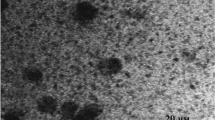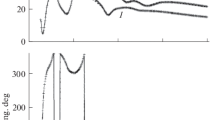Abstract
Luster decoration of medieval and renaissance potteries constitutes one of the most important and sophisticated decoration techniques of the Mediterranean basin. Lusters consist in a thin layer of silver and copper nanocrystals immersed in a dielectric matrix. Different physical phenomena are responsible for the very brilliant and complex colored effect produced by the lusters. On one hand, according to the thickness of the thin layer, interferential effects occur giving rise to a classical iridescent effect. On the other hand, the nanostructure of the metallic compound leads to extra absorption, generally observed in the visible or near infrared, due to an external resonance associated with the excitation of a surface plasmon in the metallic particles. The position of this resonance, and so the color of the film, depends from many parameters, mainly: (1) the relative volume fraction p of the metal inclusions. (2) The mean size of the metal particle. (3) The shape of the particles and (4) the dielectric functions of the constituents. These two phenomena are not independent as the second one greatly affects the dielectric function of the film and, thus, its optical thickness.
In this paper, the physical and optical properties of various lusters from Deruta and Gubbio (Italy) of the XVI century are presented. The structure and the composition of the different films have been determined by scanning electron microscope (SEM), ion beam analyses (PIXE and RBS) and low incidence X-ray diffraction. The optical properties have been determined by two different techniques: (a) hemispherical spectroscopic measurements under near-normal incidence; (b) gonioscopic measurements for a given angle of incidence and wavelength. The first one allows the determination of the effective index of refraction of the inhomogeneous layer, and the second one the determination of the bidirectional reflectance distribution function (BRDF) of the material.
Similar content being viewed by others
References
A. Caiger-Smith, The technique of reduced-pigment luster; in: Luster Pottery Technique: Tradition and Innovation in Islam and the Western World (The Herbert Press, London, 1985) pp. 197–220
J. Pérez-Arantegui, J. Molera, A. Larrea, T. Pradell, M. Vendrell-Saz, I. Borgia, B.G. Brunetti, F. Cariati, P. Fermo, M. Mellini, A. Sgamellotti, C. Viti, J. Am. Ceram. Soc. 84, 442 (2001)
G. Padeletti, P. Fermo, Appl. Phys. A 76, 515 (2003)
E. Darque-Ceretti, D. Hélary, A. Bouquillon, M. Aucouturier, “Gold-like lustre: a nanometric surface treatment for the decoration of glazed ceramics in ancient Islam, Moresque Spain, and Renaissance Italy”, 18th International conference Surface Modification Technologies, SMT 18, Dijon, France, November 2004, to be published in Surface Technologies (2005)
J.C. Dran, T. Calligaro, J. Salomon, Particle induced X-ray Emission, in: Modern Analytical Methods in Art and Archaeology, ed. by E. Ciliberto, G. Spoto (John Wiley & Sons, Chichester, 2000) p. 135
E. Ioannidou, D. Bourgarit, T. Calligaro, J.C. Dran, M. Dubus, J. Salomon, P. Walter, Nucl. Instrum. Methods Phys. Res. B 161–163, 730 (2000)
M. Mayer, SIMNRA © Max-Planck-Institut für Metallphysik (1997–1998), http://www.rzg.mpg.de/
G. Padeletti, P. Fermo, Appl. Phys. A 79, 277 (2004)
P. Fredrickx, D. Hélary, D. Schryvers, E. Darque-Ceretti, Appl. Phys. A 79, 283 (2004)
G.A. Niklasson, C.G. Granqvist, J. Appl. Phys. 55, 3382 (1984)
C.G. Granqvist, O. Hunderi, Phys. Rev. B 16, 3513 (1977)
C.J.F. Böttecher, Theory of electric polarization (Elsevier, Amsterdam, 1973)
J.C. Maxwell Garnett, Philos. Trans. R. Soc. London 203, 385 (1904)
J.C. Maxwell Garnett, Philos. Trans. R. Soc. London B 205, 237 (1906)
R.W. Cohen, G.D. Cody, M.D. Coutts, B. Abeles, Phys. Rev. B 8, 3689 (1973)
W.T. Doyle, Phys. Rev. 111 318 (1977)
U. Kreibig, J. Phys. (Paris) 38, C2-97 (1977)
S. Berthier, Optique des Milieux Composites (Polytechnica, Paris, 1993)
Author information
Authors and Affiliations
Corresponding author
Additional information
PACS
68.55.N; 61.46
Rights and permissions
About this article
Cite this article
Berthier, S., Padeletti, G., Fermo, P. et al. Lusters of renaissance pottery: Experimental and theoretical optical properties using inhomogeneous theories. Appl. Phys. A 83, 573–579 (2006). https://doi.org/10.1007/s00339-006-3526-z
Received:
Accepted:
Published:
Issue Date:
DOI: https://doi.org/10.1007/s00339-006-3526-z




